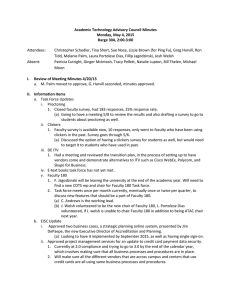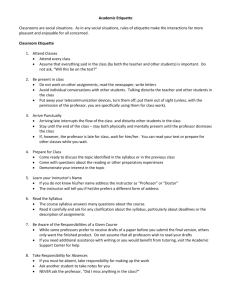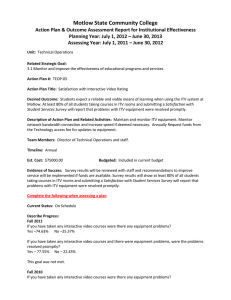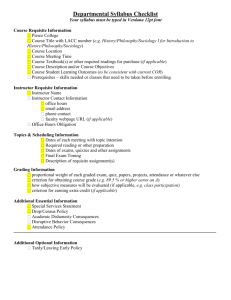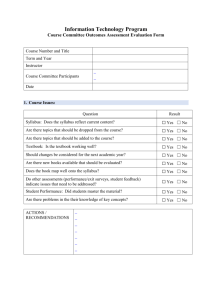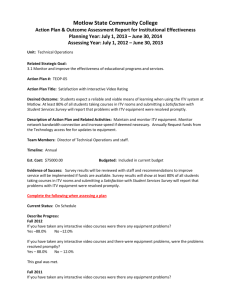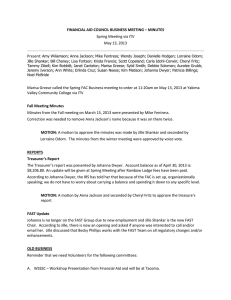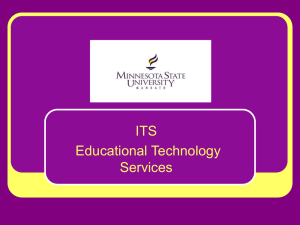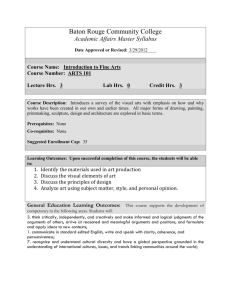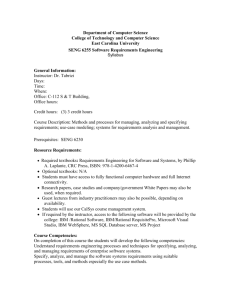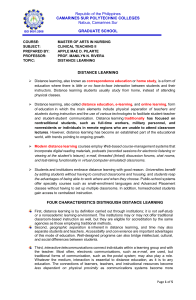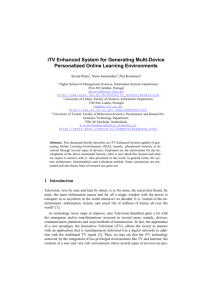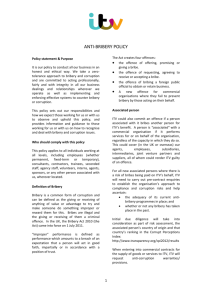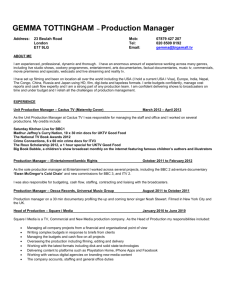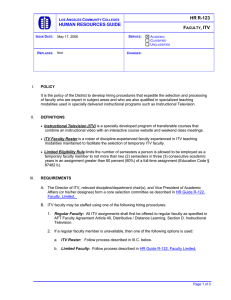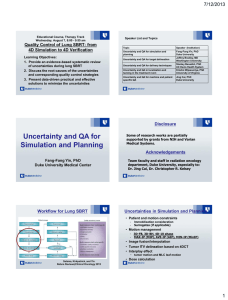ITVInstructorTips - Blackhawk Technical College
advertisement
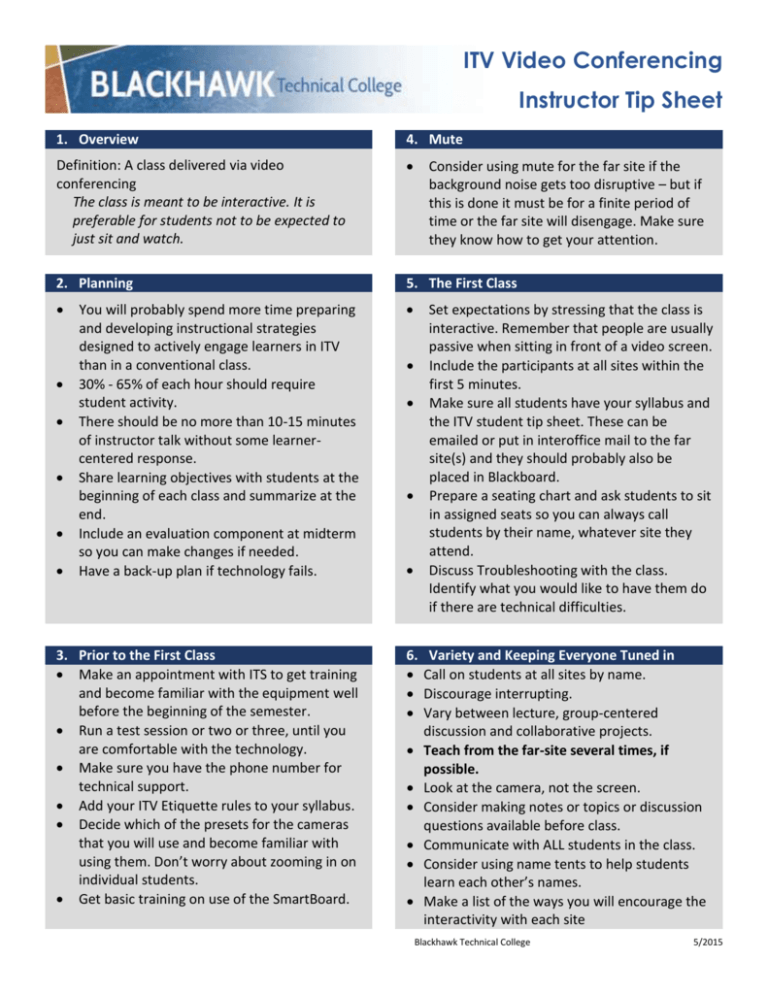
ITV Video Conferencing Instructor Tip Sheet 1. Overview 4. Mute Definition: A class delivered via video conferencing The class is meant to be interactive. It is preferable for students not to be expected to just sit and watch. 2. Planning 5. The First Class You will probably spend more time preparing and developing instructional strategies designed to actively engage learners in ITV than in a conventional class. 30% - 65% of each hour should require student activity. There should be no more than 10-15 minutes of instructor talk without some learnercentered response. Share learning objectives with students at the beginning of each class and summarize at the end. Include an evaluation component at midterm so you can make changes if needed. Have a back-up plan if technology fails. 3. Prior to the First Class Make an appointment with ITS to get training and become familiar with the equipment well before the beginning of the semester. Run a test session or two or three, until you are comfortable with the technology. Make sure you have the phone number for technical support. Add your ITV Etiquette rules to your syllabus. Decide which of the presets for the cameras that you will use and become familiar with using them. Don’t worry about zooming in on individual students. Get basic training on use of the SmartBoard. Consider using mute for the far site if the background noise gets too disruptive – but if this is done it must be for a finite period of time or the far site will disengage. Make sure they know how to get your attention. Set expectations by stressing that the class is interactive. Remember that people are usually passive when sitting in front of a video screen. Include the participants at all sites within the first 5 minutes. Make sure all students have your syllabus and the ITV student tip sheet. These can be emailed or put in interoffice mail to the far site(s) and they should probably also be placed in Blackboard. Prepare a seating chart and ask students to sit in assigned seats so you can always call students by their name, whatever site they attend. Discuss Troubleshooting with the class. Identify what you would like to have them do if there are technical difficulties. 6. Variety and Keeping Everyone Tuned in Call on students at all sites by name. Discourage interrupting. Vary between lecture, group-centered discussion and collaborative projects. Teach from the far-site several times, if possible. Look at the camera, not the screen. Consider making notes or topics or discussion questions available before class. Communicate with ALL students in the class. Consider using name tents to help students learn each other’s names. Make a list of the ways you will encourage the interactivity with each site Blackhawk Technical College 5/2015 7. Instructor / Student Dialogue and Interaction Develop a protocol for students to ask questions. You may want them to write down questions to ask at discussion time. Learn student names and use them for all students at all sites. Don’t be too quick to fill the silence. Consider trying small group discussions with report outs. Consider using the phone for group discussion between sites Provide feedback in a variety of ways. 8. Assessment 9. 10. Troubleshooting Know how to get technical help at the site where you are. Use the phone in the room to get help. Make friends with the Admin Assistant (front desk personnel in Monroe and Milton. They are very helpful for communication with students and dissemination of course materials/student work 11. Tests can be given on paper after having arranged for a proctor at the far site. Tests can be returned in interoffice mail or the Admin Assistants at Monroe and/or Milton may have time to scan and email them to the instructor. Make friends with these admins! Tests can be given on Blackboard outside of class time. Video 12. ITV Etiquette Be aware of eye contact. Look at the camera when speaking, not the screen. Don’t count on using videos (YouTube, Vimeo, etc.) Help your students understand where the cameras are and how you are using them so they know where to look when they ask questions or talk to students at the other sites and so they understand what they should see on each screen. Ask your students to keep background noise to a minimum. Microphones often pick up other sounds like crackling paper, coughing, chairscraping, or whispering to your neighbor. Suggest to your students that when someone else is talking they should wait an extra moment for that person to finish before responding. Consider whether you want to allow students to eat in class. (Crunching potato chips can be very distracting.) Include your rules in your syllabus. Blackhawk Technical College 5/2015

